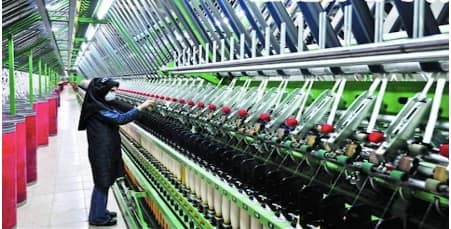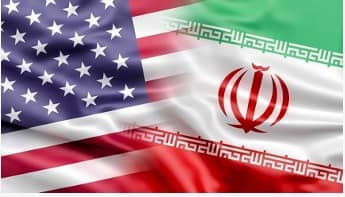The phenomenon of sanctions can be examined from several ways; Including the effect of sanctions on various sectors of the economy (oil, petrochemical, banking, automotive, shipping, etc.) and the effect of sanctions on the performance of companies and individuals under sanctions (such as the performance of the “Khatam al-Anbia” headquarters of the Revolutionary Guards, Persian Gulf Petrochemical, National Development Fund and … after being included in the US sanctions list).
But all these ways mentioned above are only part of the sanctioned reality of the country; In other words, the above analytical sections are reserved for sectoral experts in various departments and can not provide a macro view of sanctions. It seems that the country’s officials and managers, in addition to sectoral cuts, need a comprehensive image of sanctions.
In March of last year, due to the corona outbreak, we witnessed an absolute recession in the country’s clothing industry, and all shopping malls and stores were closed.
By considering the events of November two years ago and the gasoline quotation that affected clothing sales, all activists in this industry hoped for the New Year Market, but the Coronavirus destroyed all plans, so that All winter and spring clothes are produced but have not been sold, and the warehouses are full of clothes.
According to the report, the garment or textile industry was one of the five industries affected by the corona that was ordered to close, so its activists did not work and had no income. Experts believe that 80% of the chain trade of clothing products has been damaged in two years ago.
Manufacturers and activists in this industry have not yet recovered from the shock of these events and this time they see the shadow of united states sanctions over their heads. these sanctions has started on April 10 of last year, and have targeted the textile industries, clothing industries and mining.
In this context, the vice president of the Iranian Textile and Garment Manufacturers and Exporters Union said: “The new round of sanctions will affect companies that cooperated with Iranian companies in the supply of raw materials, especially from Turkey, India and China.”
He said: “The Americans had given a deadline to many banks and companies not to cooperate with Iranian companies, especially in the mentioned industries, and this deadline expired on the 20th of last April.”
He said that China’s Kunlun Bank and other banks from Turkey and India have announced that they will no longer cooperate with Iran’s textile industry.
He continued: “In this way, it is expected that the supply of raw materials, especially fibers, cotton, acrylic fibers, fabrics, yarns, machinery and equipment will be affected So we have to import them through intermediaries at a higher cost.
He predicted that this problem could increase the price of raw materials needed by the textile and clothing industries by at least 6 to 7 percent.
He said: “Although some domestic companies predicted sanctions and stored the raw materials, but it will be worked for a short time. The diplomatic apparatus and the government are expected to actively negotiate with these countries, Because they have been our country’s trading partners for many years and have not left us alone even during the sanctions Otherwise, an increase in smuggled goods and illegal imports of clothing, fabrics, yarns, etc. will be inevitable.
In the field of acrylic fibers, most of these materials are supplied from abroad, and for example, the machine-made carpet industry is up to 90% dependent on the import of these fibers. We will also face difficulties in supplying cotton, because the cotton produced in our country is of low quality.
He also reminded about the approach for the industry affected by the Corona virus: The government has provided 14% interest loans for these industries especially clothing manufacturers.
If the companies supplying raw materials and machinery to the textile industry terminate their cooperation with Iran as a result of these sanctions, the price of raw materials will increase, but the export of this sector will probably not have much effect from these sanctions. Majid Nami added: “On the other hand, the announcement of these new sanctions coincided with the weekend of other countries, and we have not yet faced the reaction of suppliers of raw materials and machinery for the Iranian textile industry in other countries.”
From two years ago and since the sanctions began the most of the world’s banks have not worked with Iran, many suppliers of raw materials and machinery got into trouble with Iran because of their cooperation. the lack of sanctions on the textile industry in recent years caused some countries to solve banking problems in various ways and continue to cooperate with Iran as the main suppliers of raw materials and textile machinery. But it wasn’t the first time of these sanctions, In the past, Security Council sanctions affected on textile and military sectors.
If companies decide to terminate their cooperation with Iran, the price of raw materials will be affected, because producers will be forced to choose indirect ways to import the materials they need. “In such circumstances, the responsibility of the government sector to pay attention to domestic production and prevent smuggling of goods will increase, because the difficulty of importing and increasing the price of raw materials and machinery in the textile industry increases the importance of preventing smuggled goods.” Because in this case, the competition of producers with these goods will be more difficult.
A member of the board of directors of the Textile and Garment Production and Export Union of Iran further clarified about the possible impact of these sanctions on the export of textile products: Due to banking problems, Iran’s exports in this sector are not very large, This section will have problems. According to him, most of the textile industry exports are related to machine-made carpets, and machine-made carpet industries are highly dependent on exports, so that 60 to 70% of the textile sector exports, equivalent to about $ 500 million annually, are related to machine-made carpets.





















